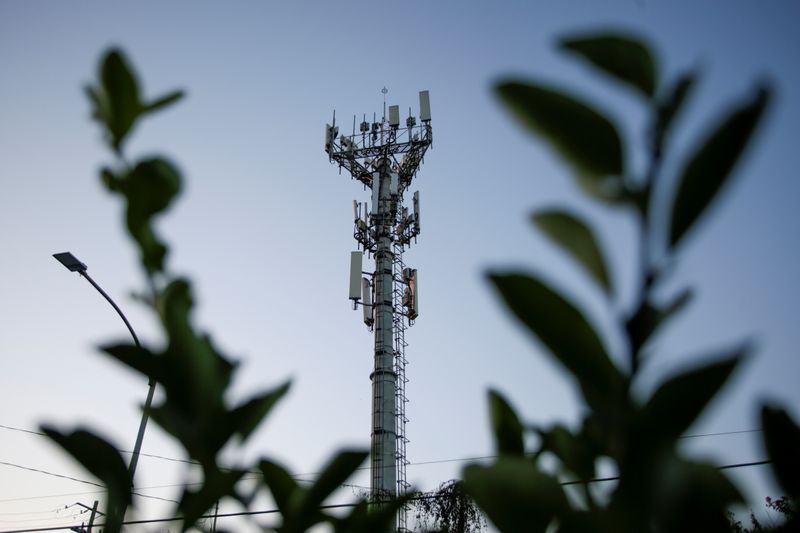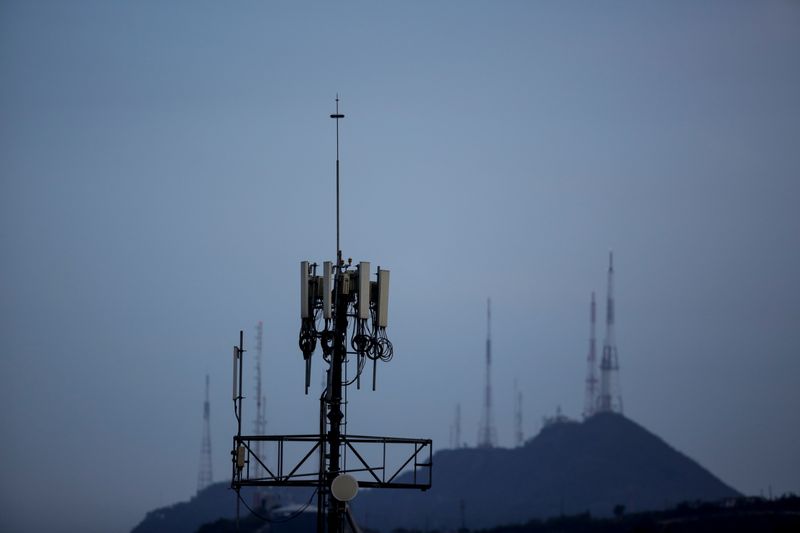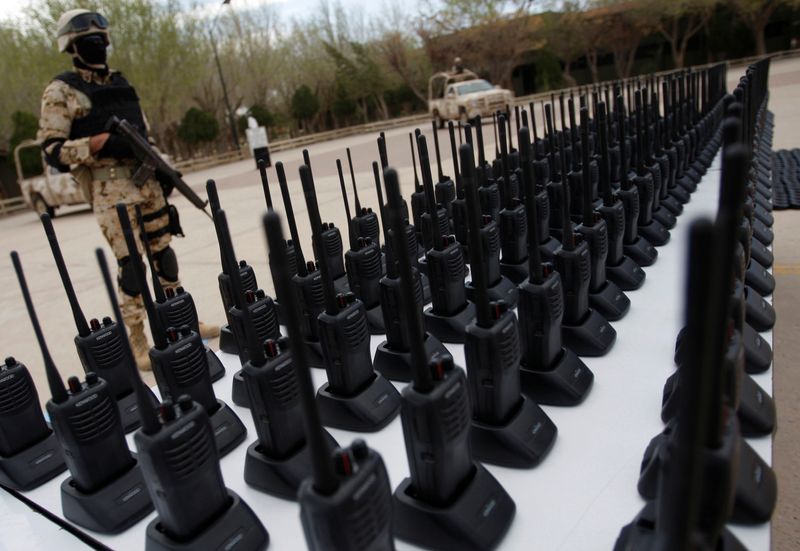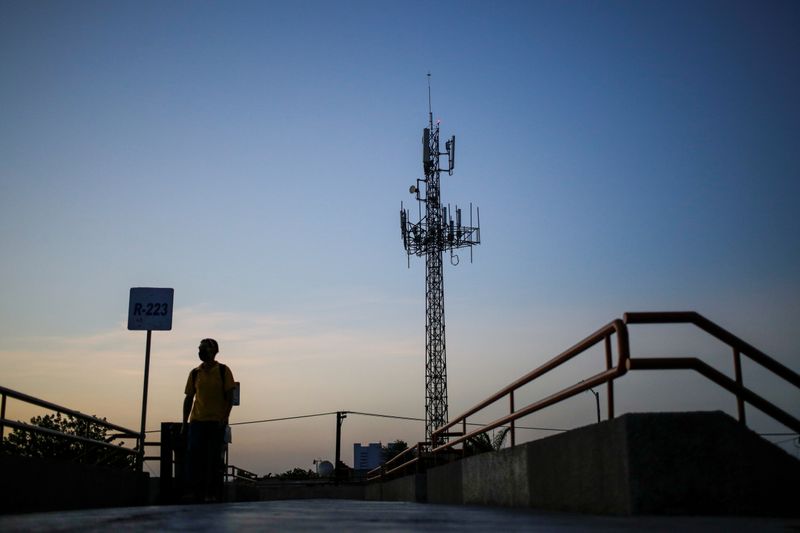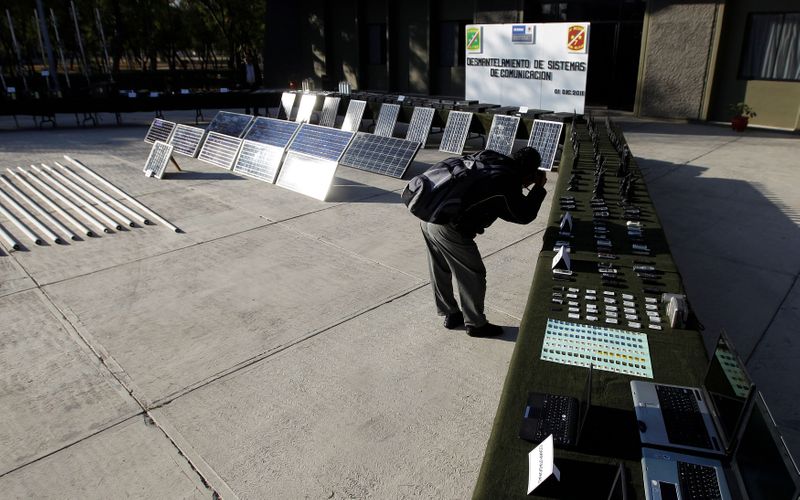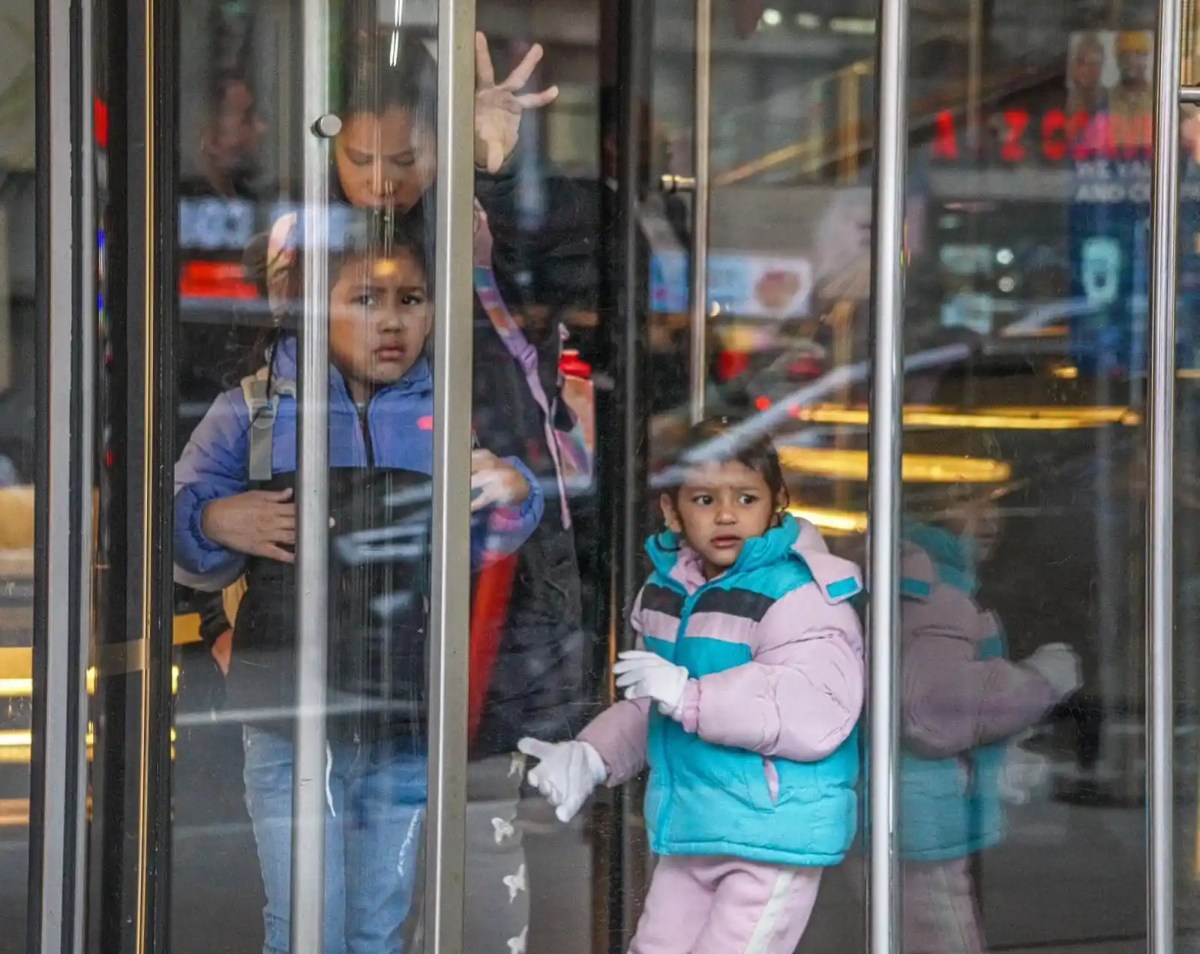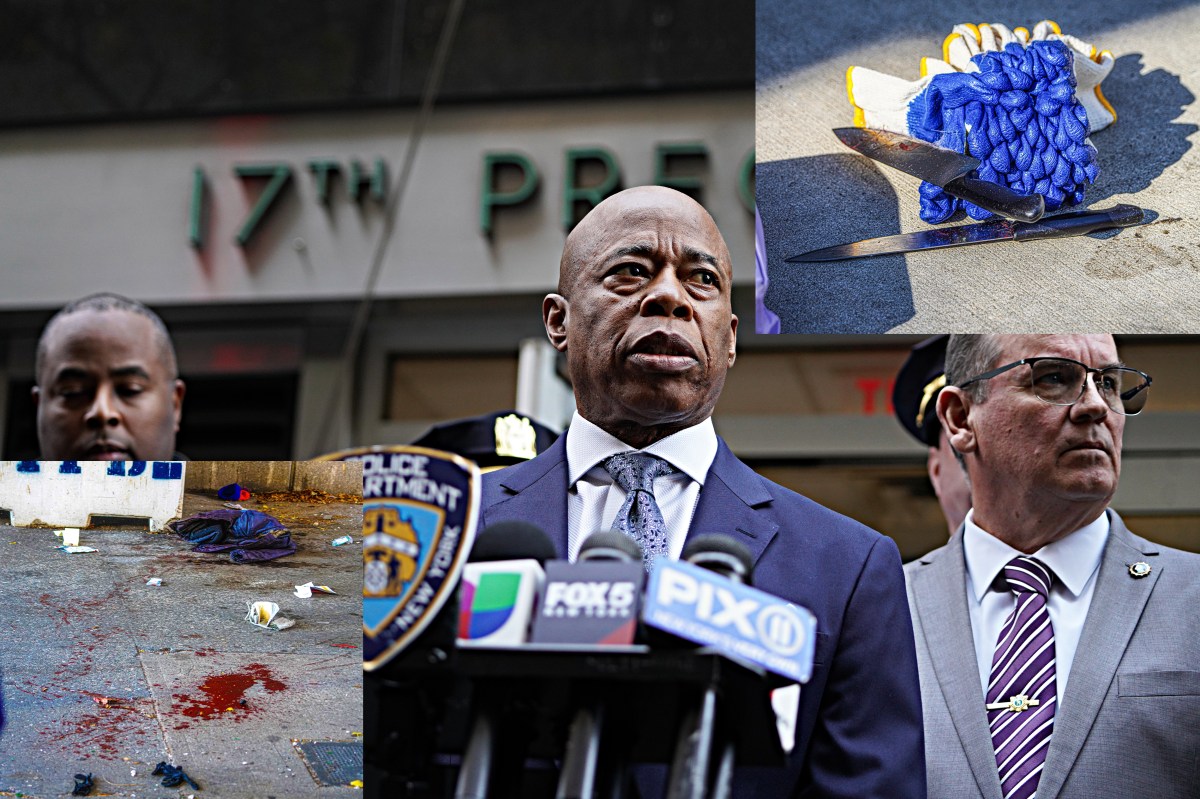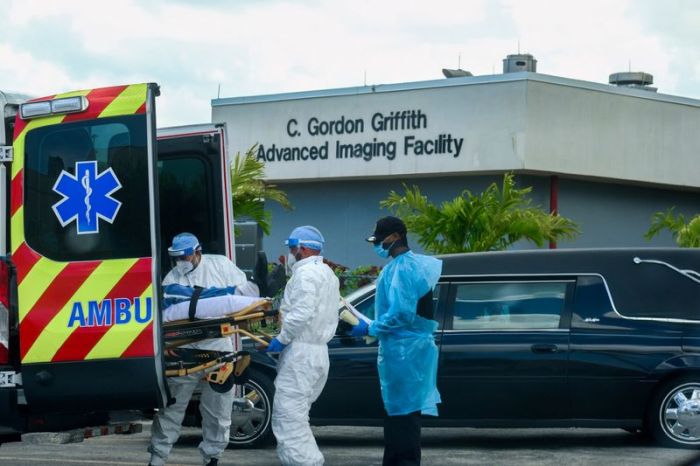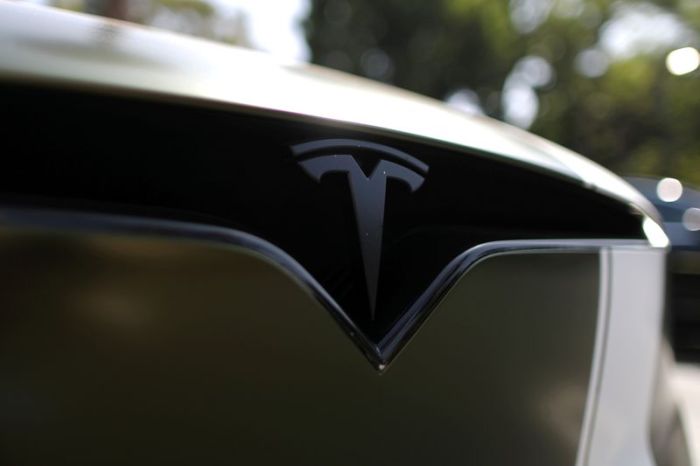MEXICO CITY (Reuters) – The young technician shut off the electricity at a cellular tower in rural Mexico to begin some routine maintenance.
Within 10 minutes, he had company: three armed men dressed in fatigues emblazoned with the logo of a major drug cartel.
The traffickers had a particular interest in that tower, owned by Boston-based American Tower Corp <AMT.N>, which rents space to carriers on its thousands of cellular sites in Mexico. The cartel had installed its own antennas on the structure to support their two-way radios, but the contractor had unwittingly blacked out the shadowy network.
The visitors let him off with a warning.
“I was so nervous… Seeing them armed in front of you, you don’t know how to react,” the worker told Reuters, recalling the 2018 encounter. “Little by little, you learn how to coexist with them, how to address them, how to make them see that you don’t represent a threat.”
The contractor had disrupted a small link in a vast criminal network that spans much of Mexico. In addition to high-end encrypted cell phones and popular messaging apps, traffickers still rely heavily on two-way radios like the ones police and firefighters use to coordinate their teams on the ground, six law enforcement experts on both sides of the border told Reuters.
Traffickers often erect their own radio antennas in rural areas. They also install so-called parasite antennas on existing cell towers, layering their criminal communications network on top of the official one. By piggybacking on telecom companies’ infrastructure, cartels save money and evade detection since their own towers are more easily spotted and torn down, law enforcement experts said.
The practice has been widely acknowledged by telecom companies and Mexican officials for years. The problem persists because the government has made inconsistent efforts to take it on, and because companies have little recourse to stop it, experts on law enforcement and Mexican society said.
“There is a sense of powerlessness” in Mexico, said Duncan Wood, director of the Wilson Center’s Mexico Institute in Washington. He said companies feel they “cannot respond to issues like this because (they) are afraid of the consequences from groups that essentially enjoy impunity.”
Mexico’s Defense Ministry said it provides security for federal agencies that request its help in dismantling “parasitic equipment” installed by cartels on cell towers.
The nation’s Attorney General’s office did not respond to a request for comment about criminal activity at these sites. The Federal Telecommunications Institute, Mexico’s telecom and broadcasting regulator, said its compliance unit had not received reports of parasite antennas from any companies under its jurisdiction.
Reuters has provided the first in-depth account of how traffickers exploit Mexico’s telecom infrastructure and the toll it takes on workers. The news organization interviewed 14 current and former telecom workers about the interactions that they and their colleagues have had with criminal groups at cell towers.
Twelve of them said they had seen parasite antennas on towers belonging to Telesites SAB de CV <SITESB1.MX>, a tower rental company in which the family of Mexican billionaire Carlos Slim is a major shareholder; as well as American Tower, U.S. carrier AT&T Corp, Spain’s Telefonica SA <TEF.MC> and Mexico’s Axtel SAB de CV <AXTELCPO.MX>.
Reuters is omitting the technicians’ names, details of where they work and most names of cartels they encounter for the workers’ protection. Two technicians shared texts they exchanged with colleagues regarding on-the-job run-ins with organized crime at the cell towers, and one of them shared a photo of an illicit device he discovered in the course of his work. The incidents the 12 workers recounted occurred between 2015 and 2020 in several Mexican states.
Most of the technicians said they encounter the devices, known colloquially as narco-antennas, just a few times a year. But one engineer who spoke with Reuters estimated that parasite antennas are present on roughly 20% of towers where his firm works, while another said about 30% of his sites had them when local criminals were particularly active in his area in 2018.
Their No. 1 rule when discovering cartel equipment on a tower is simple: Don’t touch it.
Dealing with gangsters in person is trickier, they said, requiring diplomacy and a cool head. Some said their interactions have been cordial, bordering on friendly. Others said they have been threatened, detained and at times fearful for their lives.
The traffickers “convey their superiority, …it’s like when someone wants to mark their territory,” one technician said. “I can’t get nervous because they pick up on when someone is secure and when someone is very afraid.”
‘SECURITY’ PAYMENTS
Cartels and other criminal groups sometimes demand telecom workers pay “security payments” or “quotas” in order to perform maintenance on towers and other tasks, according to five contract laborers who have worked on projects involving America Movil SAB de CV <AMXL.MX>, Slim’s telecommunications firm, as well as American Tower and AT&T.
These people said the best strategy is to be polite, stay calm and pay up immediately. Those costs get passed along to their employers; laborers for subcontractors said their firms often charge the big telecom companies higher rates for working in dicey areas.
A spokesman for America Movil and Telesites declined to comment. Axtel, which sold some of its telecom towers in 2017, said it had not received any reports of incidents on its remaining infrastructure. AT&T said that “under no circumstances” does it “tolerate or authorize payments outside of those established by law.”
An American Tower spokesman said “we have not received any credible reports” of parasite antennas or other cartel activities at the company’s Mexican sites. He said the firm alerts local authorities immediately if a site is vandalized, and that “the safety of those who work on our towers, as well as the towers’ continued secure operation, are our top priorities.”
Guillermo Ramos, Telefonica’s director of security in Mexico, said the company has not received any reports of parasite antennas over at least the past year.
Narco-antennas are just one aspect of telecom companies’ headaches in Mexico. Criminals raid their infrastructure for batteries and copper cables to resell on the black market, executives in the sector told Reuters.
Stories like this are unfolding in industries across Mexico as criminal groups branch out far beyond drugs. Cartels have siphoned millions of dollars’ worth of fuel from Mexican state oil company Petróleos Mexicanos or Pemex in recent years; they steal cargo and pilfer lumber. The tentacles of organized crime extend even into Mexico’s avocado growing regions, where gangs extort farmers and hijack loads of the green fruit.
Mexican President Andres Manuel Lopez Obrador took office in 2018 advocating a softer approach to his predecessors’ war on drugs with the motto “hugs, not bullets.” The cartels’ encroachment on legitimate businesses did not start on his watch. But the change in strategy has left companies with nowhere to turn, said Mike Vigil, a former chief of international operations for the U.S. Drug Enforcement Administration (DEA).
“Lopez Obrador has sent a message to all of Mexico, including the private sector… that he doesn’t want a confrontational situation with the cartels,” Vigil said. “Telecom companies are caught between a rock and a hard spot.”
Lopez Obrador’s office did not respond to requests for comment. The president previously has insisted that Mexico must tackle poverty and other factors that drive crime, in addition to using law enforcement.
“We must continue confronting organized crime… There is no longer protection for anyone, as there was before,” Lopez Obrador said in early June. “We are committed to achieving peace and we have made progress in combating, in reducing, crime.”
AN OLD-SCHOOL TOOL
Radios are an indispensable tool for cartels and part of their lore. One classic narco-ballad or “corrido” celebrating the notorious Zetas syndicate depicts members speaking over their two-way handsets.
When it comes to communicating in real-time with large groups, radio is tough to beat. These networks are often encrypted and, unlike cellular networks, the location of someone using a radio can’t easily be pinpointed, said Paul Craine, a former director of the DEA’s operations in Mexico and Central America.
A vast web of antennas is necessary to power those networks, and Mexico’s thousands of cellular towers, many tucked away in rural areas, provide ready-made places to install them. Craine said he consistently observed cartels latching onto cellular towers while working in Mexico from 2012 to 2018.
To a trained eye, cartel equipment sticks out like a sore thumb. At the foot of the tower, criminals place a base station, which generates the radio waves, often tucked into a suitcase or picnic cooler for protection from the sun, according to Craine and the technicians who spoke with Reuters. Higher up they install parasite antennas to project the signal.
Gangs typically don’t bother with camouflage. The Zetas are particularly brash, Craine said. He recalled seeing coolers emblazoned with their logo: the letter Z. A former engineer for Huawei Technologies Co, the Chinese telecom vendor, told Reuters that one of the workers he supervised sent him a photo of a device on a Telesites tower in early 2018 with a sign that read: “This antenna belongs to the Zetas. If any problems arise, please call…,” followed by a phone number.
Cesar Funes, a vice president of institutional relations for Huawei in Latin America, said he had not received any reports of parasite antennas. Telesites declined to comment.
The equipment persists on companies’ networks, industry executives and law enforcement experts said, due to the difficulty of rooting out the devices across far-flung towers, and the risks that removal might pose to engineers in the field, many of whom don’t report them out of fear.
Telecom companies quietly have acknowledged the cartels’ presence in meetings with Mexican government officials. Gerardo Sanchez Henkel, a former director of compliance for telecom regulator IFT, told Reuters he discussed the issue of parasite antennas regularly in meetings with companies before leaving government in late 2015.
The IFT said it did not know whether Sanchez Henkel had discussed the issue with companies during his time in government.
Marco Galvan, who was a senior director for telecom trade group GSMA in Mexico until February, said companies often lamented theft and the presence of unauthorized devices on their towers.
“It was an issue that was frequently cited by all the operators as something that inhibited investment,” he said.
The National Association of Telecommunications (ANATEL), a trade group representing players including America Movil, AT&T and Telefonica, said companies it surveyed reported 62 parasite antennas from 2017 through mid-2018, the most current data available. Nearly 3,000 batteries were stolen from cell towers over the same period, it said.
ANATEL CEO Gabriel Szekely said he had no more information to provide on the phenomenon. He told the Mexican newspaper Reforma in 2018 it was clear that criminal groups were capitalizing on what companies had built.
“Suddenly you find devices that are not yours, they belong to organized crime,” Szekely told Reforma. “And there are places where they do not even let you in to maintain your own facilities.”
‘GENTLEMAN’S AGREEMENT’
In the worst criminal hot spots, maintaining towers often comes at a price.
The five telecom workers who told Reuters that they or their colleagues had been forced to pay up said those encounters typically involved groups of armed men confronting them at the towers. The workers are sometimes unsure of exactly who they are dealing with. In some parts of rural Mexico, self-defense organizations have emerged to fill the vacuum left by the state, with these vigilantes often running elaborate extortion schemes to fund their operations, security analysts said.
Two people who work for an AT&T subcontractor said there are a number of towers where they routinely pay 500 to 1,000 pesos ($22.34 to $44.67) any day they want to perform maintenance. One of the people estimated the number of towers at 11.
Reuters could not independently confirm those payments.
Sometimes the demands are larger. In 2017, a group demanded a payment of about $1,000 from subcontractors working on a large project for America Movil involving multiple towers, according to an engineer who was involved. The criminals called a representative of Huawei, which was overseeing the job, to escalate the threat, the person said.
The engineer said the criminal group was courteous throughout the negotiations, addressing workers as “usted,” a Spanish pronoun that conveys respect. The telecom crew had no trouble after they paid.
“It was a gentleman’s agreement,” the engineer said.
America Movil declined to comment. Reuters could not independently confirm the payment.
That worker said Huawei pays subcontractors more to work in high-risk areas, which enabled the crew to recover what it paid. He showed Reuters a copy of a contract that included an “allowance for site in dangerous city.” Two other subcontractors told Reuters that allowance has helped them cover the cost of extortion payments.
Funes, the Huawei executive, denied the company pays criminal groups for access to its sites, and said Huawei does not permit subcontractors to do so either. He said the company sometimes pays higher rates in smaller markets where it is more difficult to find engineers.
A spokesman for Huawei said the company could not comment on specific allowances, citing the confidentiality of its contracts with suppliers and employees.
“We will never pay anything that is (beyond) the scope of the contract,” Funes said.
RULES FOR SURVIVAL
Technicians who work in dangerous parts of Mexico say making nice with drug traffickers is a crucial part of the job.
One subcontractor said traffickers stick close to his crews to ensure workers don’t touch cartel antennas, and to be certain they are not enemies who have come to spy on them.
“You work with a narco-escort,” the subcontractor said.
Cartels have kidnapped technicians doing maintenance on cellular towers to make them fix their networks, people working in the sector said. The technicians usually are released after a few days, if not sooner. Still, those who spoke with Reuters said they live in fear of being forced by traffickers to do such work, lest they be killed for knowing too much, or become targets of authorities or rival criminal groups for being complicit. Whenever possible, they said, they downplay their expertise.
After traumatic run-ins with cartels, some technicians refuse to go into the field or have left the industry entirely, people working in the sector said.
One subcontractor estimated that 10 workers, primarily new recruits, quit his company over the past year due to security concerns.
Even old hands can run into trouble. In 2016, a technician working for an America Movil supplier learned his colleagues had been turned away from a site in a cartel stronghold.
Determined to finish the job, the engineer headed to the tower alone. He was quickly surrounded by five men armed with long guns and dressed in clothing bearing the cartel’s initials. They forced him into their vehicle and took him to a house in town, where their boss was waiting.
The engineer said he reverted to his security training, resolving not to show fear. When the cartel boss complained that his antennas had been failing, the captive seized an opening.
“It’s in all our interest that the tower is working,” he recalls saying. “Just let us work, and we won’t interfere with your equipment… On the contrary, we’ll check it for you.”
The cartel agreed, driving the engineer back to the tower. He said he re-established service at the tower and made a perfunctory check of the illicit antennas. He tried to head off any requests for additional help, saying he was a supervisor whose technical skills were rusty.
Throughout the encounter, the engineer maintained his composure. But when he returned to his hotel room that evening, he said his body shook with such force that he thought he might be having a breakdown.
“In the moment, I was fine, I just trusted in God,” he said. “My nerves got me afterwards.”
The young technician who accidentally disrupted a cartel’s communications at an American Tower site told Reuters he knows the risk he’s taking. But he said he has a family to support and earns a premium for working in a territory that many peers wouldn’t touch.
After a few years working the area, he said he has established a rapport with gang members, who often let him pass to the job site with little more than a wave hello.
He has learned from his early mistake. Now, before he cuts the power, he first connects any parasite antennas to a generator to ensure the cartel’s network keeps humming.
(Reporting by Julia Love; Additional reporting by Drazen Jorgic in Mexico City and Tarmo Virki in Tallinn, Estonia; Editing by Marla Dickerson)

